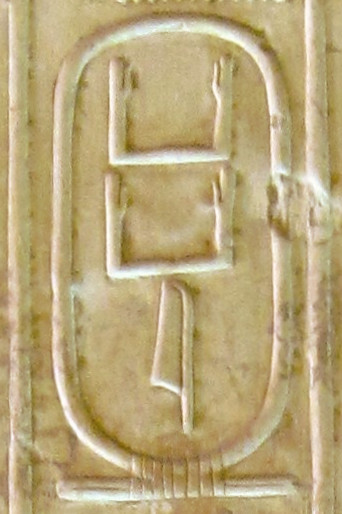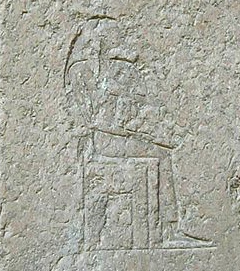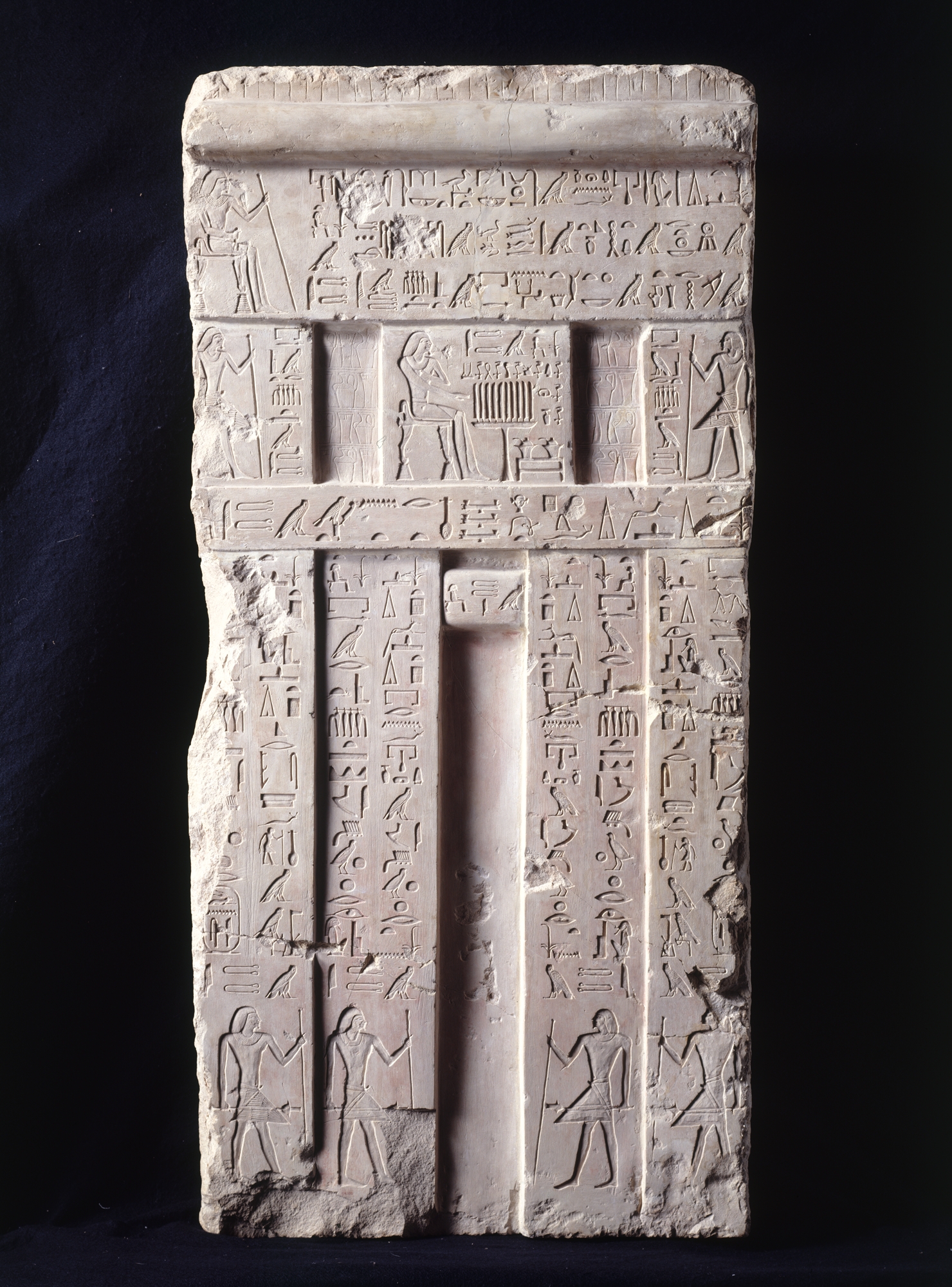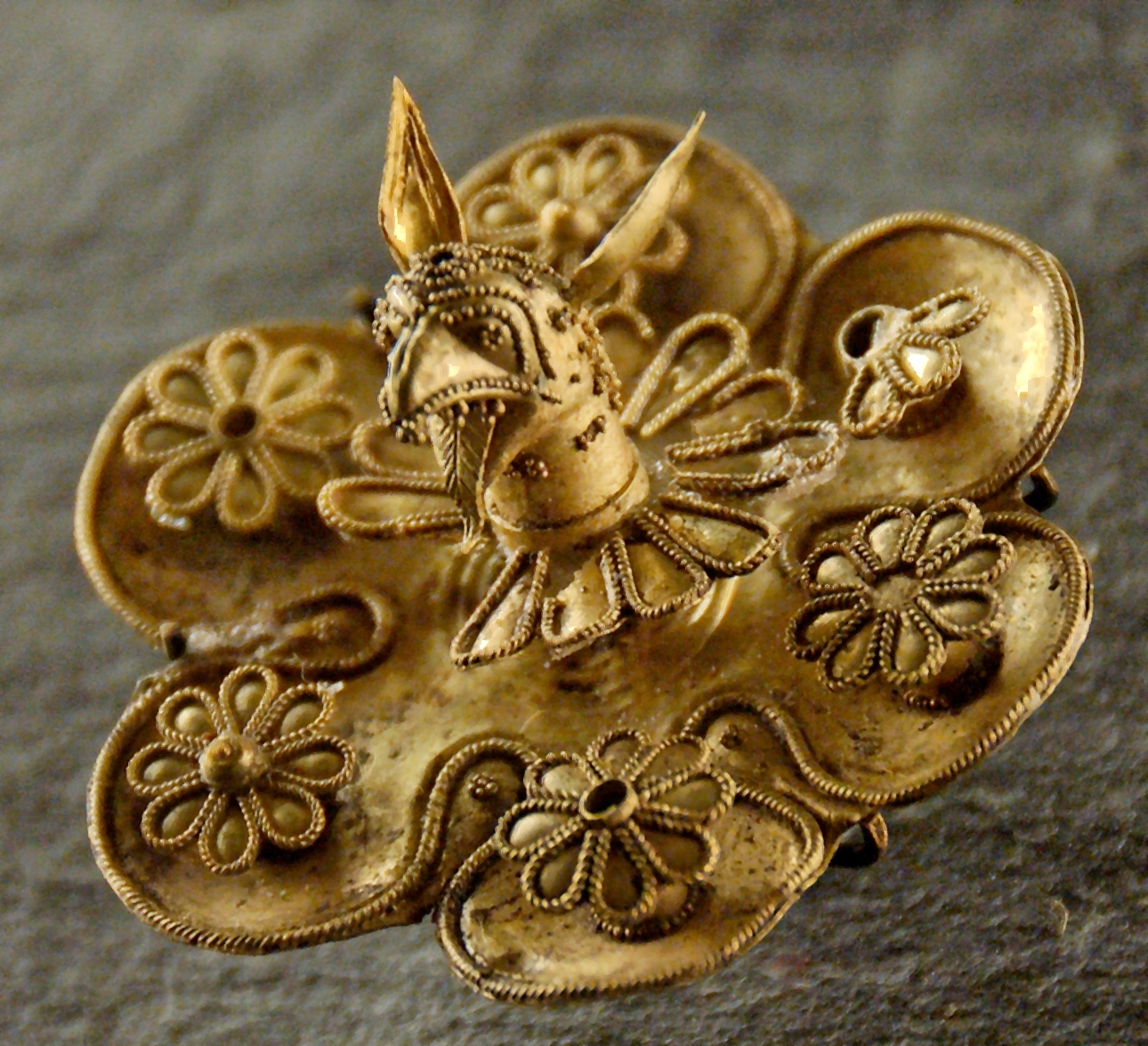|
Sahure
Sahure (also Sahura, meaning "He who is close to Ra, Re"; died 2477 BC) was a pharaoh, king of ancient Egypt and the second ruler of the Fifth dynasty of Egypt, Fifth Dynasty ( – BC). He reigned for around 13 years in the early 25th century BC during the Old Kingdom of Egypt, Old Kingdom Period. Sahure's reign marks the political and cultural high point of the Fifth Dynasty of Egypt, Fifth Dynasty. He was probably the son of his predecessor Userkaf with Queen Neferhetepes (wife of Userkaf), NeferhetepesII, and was in turn succeeded by his son Neferirkare Kakai. During Sahure's rule, Egypt had important trade relations with the Levantine coast. Sahure launched several naval expeditions to modern-day Lebanon to procure cedar trees, slaves, and exotic items. His reign may have witnessed the flourishing of the Egyptian navy, which included a high-seas fleet as well as specialized racing boats. Relying on this, Sahure ordered the earliest attested expedition to the land ... [...More Info...] [...Related Items...] OR: [Wikipedia] [Google] [Baidu] |
Neferirkare Kakai
Neferirkare Kakai (also known as Raneferirka Kakai and in Greek as Nefercherês, Νεφερχέρης; died 2460 BC) was an ancient Egyptian pharaoh, the third king of the Fifth Dynasty. Neferirkare, the eldest son of Sahure with his consort Meretnebty, was known as Ranefer A before he came to the throne. He acceded the day after his father's death and reigned for around 17 years, sometime in the early to mid-25th century BCE. He was himself very likely succeeded by his eldest son, born of his queen Khentkaus II, the prince Ranefer B who would take the throne as king Neferefre. Neferirkare fathered another pharaoh, Nyuserre Ini, who took the throne after Neferefre's short reign and the brief rule of the poorly known Shepseskare. Neferirkare was acknowledged by his contemporaries as a kind and benevolent ruler, intervening in favour of his courtiers after a mishap. His rule witnessed a growth in the number of administration and priesthood officials, who used their expanded ... [...More Info...] [...Related Items...] OR: [Wikipedia] [Google] [Baidu] |
Userkaf
Userkaf (known in Ancient Greek as , ; died 2491 BC) was a pharaoh, king of ancient Egypt and the founder of the Fifth Dynasty of Egypt, Fifth Dynasty. He reigned for around seven years in the early 25th century BC, during the Old Kingdom of Egypt, Old Kingdom period. He probably belonged to a branch of the Fourth Dynasty of Egypt, Fourth Dynasty royal family, although his parentage is uncertain; he could have been the son of Khentkaus I. He had at least one daughter. Sahure, who succeeded him as king, was probably his son with his consort Neferhetepes (wife of Userkaf), Neferhetepes. A tomb belonging to another possible son, Waser-If-Re, has been discovered in Saqqara. His reign heralded the ascendancy of the cult of Ra, who effectively became Egypt's state god during the Fifth Dynasty. Userkaf may have been a high-priest of Ra before ascending the throne, and built a Egyptian sun temple, sun temple, known as the ''Sun temple of Userkaf, Nekhenre'', between Abusir and Abu Gurab. ... [...More Info...] [...Related Items...] OR: [Wikipedia] [Google] [Baidu] |
Shepseskare
Shepseskare or Shepseskara (Egyptian for "Noble is the Soul of Ra"; died 2458 BC) was an Ancient Egyptian king, the fourth or fifth ruler of the Fifth Dynasty (2494–2345 BC) during the Old Kingdom period. Shepseskare lived in the mid- 25th century BC and was probably the owner of an unfinished pyramid in Abusir, which was abandoned after a few weeks of work in the earliest stages of its construction. Following historical sources, Shepseskare was traditionally believed to have reigned for seven years, succeeding Neferirkare Kakai and preceding Neferefre on the throne, making him the fourth ruler of the dynasty. He is the most obscure ruler of this dynasty and the Egyptologist Miroslav Verner has strongly argued that Shepseskare's reign lasted only a few months at the most, after that of Neferefre. This conclusion is based upon the state and location of Shepseskare's unfinished pyramid in Abusir as well as the very small number of artefacts attributable to this king. Verne ... [...More Info...] [...Related Items...] OR: [Wikipedia] [Google] [Baidu] |
Meretnebty
Meretnebty () was a queen consort of Egypt as a wife of king Sahure. She lived during the 5th Dynasty and was named after Two Ladies, a pair of Egyptian goddesses who protected the king. Biography Meretnebty's parents are not known. She is depicted with her husband in his mortuary temple at Abusir Abusir ( ; Egyptian ''pr wsjr'' ' "the resting place of Osiris"; ) is the name given to an ancient Egyptian archaeological pyramid complex comprising the ruins of 4 kings' pyramids dating to the Old Kingdom period, and is part of the .... In the temple, she is shown next to the mother of Sahure, Neferhetepes (wife of Userkaf), Neferhetepes, both holding their hands. That is a highly unusual depiction and might indicate a close relationship between both. Perhaps Neferhetepes was her mother. In the mortuary temple, several sons are mentioned. Their names are Horemsaf, Netjerirenre, Khakare, and Nebankhre. It is not clear if these princes are the sons of Meretnebty or poss ... [...More Info...] [...Related Items...] OR: [Wikipedia] [Google] [Baidu] |
Neferhetepes (wife Of Userkaf)
Neferhetepes (died 2480 BC) was most likely the wife of the ancient Egyptian king Userkaf, who was the first king of the Fifth Dynasty. She was the mother of king Sahure, Userkaf's successor, and she was most likely the mother of Meretnebty Meretnebty () was a queen consort of Egypt as a wife of king Sahure. She lived during the 5th Dynasty and was named after Two Ladies, a pair of Egyptian goddesses who protected the king. Biography Meretnebty's parents are not known. She is dep ..., Sahure's wife. Neferhetepes' most important titles were ''mother of the king of Upper and Lower Egypt'' and ''daughter of the god''. Neferhetepes was known for a long time from a reference in the tomb of the official Persen. His tomb is not far away from the pyramid of Userkaf, and therefore, there were some speculations about her identity and her relation to this king. However, several reliefs were found recently at the causeway of the pyramid belonging to king Sahure. Here, Neferhetepes is ... [...More Info...] [...Related Items...] OR: [Wikipedia] [Google] [Baidu] |
Egyptian Pyramids
The Egyptian pyramids are ancient masonry structures located in Egypt. Most were built as tombs for the pharaohs and their consorts during the Old Kingdom of Egypt, Old and Middle Kingdom of Egypt, Middle Kingdom periods. At least 138 identified pyramids have been discovered in Egypt. Approximately Nubian pyramids, 80 pyramids were built within the Kingdom of Kush, now located in the modern country of Sudan. The earliest known Egyptian pyramids are at Saqqara, west of Memphis, Egypt, Memphis. Step-pyramid-like structures, like Mastaba 3808 attributed to pharaoh Anedjib, may predate the Pyramid of Djoser built during the Third dynasty of Egypt, Third Dynasty. This pyramid and its surrounding complex are generally considered to be the world's oldest monumental structures constructed of ashlar, dressed masonry. The most famous Egyptian pyramids are those found at Giza Plateau, Giza, on the outskirts of Cairo, Egypt, Cairo. Several of the Giza pyramid complex, Giza pyrami ... [...More Info...] [...Related Items...] OR: [Wikipedia] [Google] [Baidu] |
Myrrh
Myrrh (; from an unidentified ancient Semitic language, see '' § Etymology'') is a gum-resin extracted from a few small, thorny tree species of the '' Commiphora'' genus, belonging to the Burseraceae family. Myrrh resin has been used throughout history in medicine, perfumery, and incenses. Myrrh mixed with posca or wine was widely used in many ancient cultures to produce pleasurable feelings and as an anti-inflammatory and analgesic. Extraction and production When a cut on a tree penetrates through the bark and into the sapwood, the tree secretes a resin. Myrrh gum, like frankincense, is such a resin. Myrrh is harvested by repeatedly cutting the trees to bleed the gum, which is waxy and coagulates quickly. After the harvest, the gum becomes hard and glossy. The gum is yellowish and may be either clear or opaque. It darkens deeply as it ages, and white streaks emerge. Myrrh gum is commonly harvested from trees of the genus Commiphora. It is commonly extracted fro ... [...More Info...] [...Related Items...] OR: [Wikipedia] [Google] [Baidu] |
Old Kingdom Of Egypt
In ancient Egyptian history, the Old Kingdom is the period spanning –2200 BC. It is also known as the "Age of the Pyramids" or the "Age of the Pyramid Builders", as it encompasses the reigns of the great pyramid-builders of the Fourth Dynasty of Egypt, Fourth Dynasty, such as King Sneferu, under whom the art of pyramid-building was perfected, and the kings Khufu, Khafre and Menkaure, who commissioned the construction of the Giza pyramid complex, pyramids at Giza. Ancient Egypt, Egypt attained its first sustained peak of civilization during the Old Kingdom, the first of three so-called "Kingdom" Egyptian chronology, periods (followed by the Middle Kingdom of Egypt, Middle Kingdom and New Kingdom of Egypt, New Kingdom), which mark the high points of civilization in the lower Nile Valley. The Periodization of Ancient Egypt, concept of an "Old Kingdom" as one of three "golden ages" was coined in 1845 by the German Egyptology, Egyptologist Christian Charles Josias von Bunsen, Baron ... [...More Info...] [...Related Items...] OR: [Wikipedia] [Google] [Baidu] |
Land Of Punt
The Land of Punt (Egyptian language, Egyptian: ''wikt:pwnt#Egyptian, pwnt''; alternate Egyptian language#Egyptological pronunciation, Egyptological readings ''Pwene''(''t'') ) was an ancient kingdom known from Ancient Egyptian trade records. It produced and exported gold, aromatic resins, Dalbergia melanoxylon, blackwood, ebony, ivory trade, ivory and wild animals.Shaw & Nicholson, p. 231. Recent evidence locates it in northwestern Eritrea. It is possible that it includes or corresponds to Opone, as later known by the Ancient Greece, ancient Greeks, while some Biblical criticism, biblical scholars have identified it with the biblical land of Phut, Put or Havilah. At times Punt is referred to as ''Ta netjer'' (''wikt:tꜣ-nṯr#Egyptian, tꜣ nṯr''), . The exact location of Punt is debated by historians. Various locations have been offered, southeast of Egypt, a coastal region south of it along the Red Sea, Gulf of Aden and the Indian Ocean, in present day north-east Sudan, E ... [...More Info...] [...Related Items...] OR: [Wikipedia] [Google] [Baidu] |
Electrum
Electrum is a naturally occurring alloy of gold and silver, with trace amounts of copper and other metals. Its color ranges from pale to bright yellow, depending on the proportions of gold and silver. It has been produced artificially and is also known as "Colored gold#Green gold, green gold".Emsley, John (2003Nature's building blocks: an A–Z guide to the elements Oxford University Press. p. 168. . Electrum was used as early as the third millennium BC in the Old Kingdom of Egypt, sometimes as an exterior coating to the pyramidion, pyramidia atop ancient Egyptian pyramids and obelisks. It was also used in the making of ancient Beaker (archaeology) , drinking vessels. The first known metal coins made were of electrum, dating back to the end of the 7th century or the beginning of the 6th century BC. Etymology The name ''electrum'' is the Latinized form of the Greek language, Greek word ἤλεκτρον (''ḗlektron''), mentioned in the ''Odyssey'', referring to a metallic s ... [...More Info...] [...Related Items...] OR: [Wikipedia] [Google] [Baidu] |
Abusir
Abusir ( ; Egyptian ''pr wsjr'' ' "the resting place of Osiris"; ) is the name given to an ancient Egyptian archaeological pyramid complex comprising the ruins of 4 kings' pyramids dating to the Old Kingdom period, and is part of the Pyramid Fields of the Memphis and its Necropolis UNESCO World Heritage Site. The pyramid complex is named after the neighbouring village of Abusir, in the markaz (county) of Badrashin, Giza. The Abusir pyramid complex is located on the Western Desert plateau at the edge of the cultivated plain, with the Giza Pyramids to its north, and Saqqara to its south, and served as one of the main elite cemeteries for the ancient Egyptian capital city of Memphis. Several other villages in northern and southern Egypt are named Abusir or Busiri. The locality of Abusir took its turn as the focus of the prestigious western burial rites operating out of the then-capital of Memphis during the Old Kingdom 5th Dynasty. As an elite cemetery, neighbou ... [...More Info...] [...Related Items...] OR: [Wikipedia] [Google] [Baidu] |
Turquoise
Turquoise is an opaque, blue-to-green mineral that is a hydrous phosphate of copper and aluminium, with the chemical formula . It is rare and valuable in finer grades and has been prized as a gemstone for millennia due to its hue. The robin egg blue or sky blue color of the Persian turquoise mined near the modern city of Nishapur, Iran, has been used as a guiding reference for evaluating turquoise quality. Like most other opaque gems, turquoise has been devalued by the introduction of treatments, imitations, and synthetics into the market. Names The word ''turquoise'' dates to the 17th century and is derived from the Old French ''turquois'' meaning "Turkish" because the mineral was first brought to Europe through the Ottoman Empire.Turquoise . minerals.usgs.gov However, according to [...More Info...] [...Related Items...] OR: [Wikipedia] [Google] [Baidu] |










